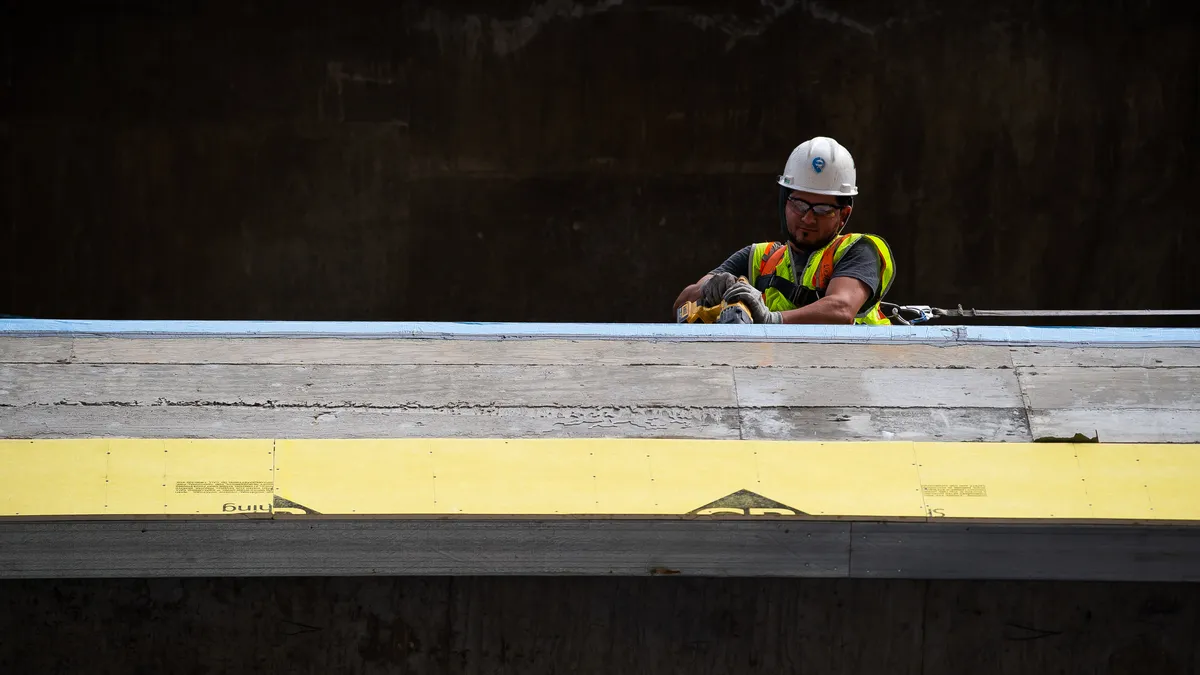Dive Brief:
- Falling demand for labor reduced job openings by 10% in August, raising the prospect that wage pressures may ease as the Federal Reserve’s most rapid withdrawal of monetary stimulus since the 1980s starts to cool the labor market.
- Following an economic slowdown during the first half of the year, job openings plummeted to 10.1 million in August from 11.2 million in July, with financial, health and education services reducing opportunities the most, the Labor Department said Tuesday. The ratio of openings to unemployed workers — a key signal for Fed officials of an overheating labor market — fell during the period to 1.67 from 1.97.
- The decline in job openings and other recent data on the labor market “is all consistent with the idea that this is starting to cool down,” Peter Cappelli, director of the Center for Human Resources at the University of Pennsylvania’s Wharton School, said in an interview. A rising number of forecasts that the economy will soon tip into recession has likely prompted companies to scale down hiring plans.
Dive Insight:
CFOs for several months have faced intense pressure to raise compensation as the number of available jobs far exceeded the number of workers and inflation rose to a four-decade high, eroding real wages.
Wage pressures may now be easing, according to Cappelli and other economists. Aggressive Fed tightening slowed gains in the Consumer Price Index to 8.3% in August from 9.1% in June, the highest inflation in 40 years.
The central bank has also made progress in its goal to bring labor market supply and demand into better balance. The labor force in August ballooned by 786,000 workers as job openings fell by 1.1 million in the biggest decline since the sharp pandemic recession in April 2020.
Still, pressures on CFOs to raise pay persist, as increases in compensation still lag rapid price gains. Real average hourly earnings fell 2.8% in August compared with the prior year, according to the Labor Department.
CFOs may not realistically expect wage pressure to decline as long as pay increases lag inflation and the number of job vacancies far exceeds the number of unemployed people looking for work.
Companies may do well to flag to shareholders a need to raise wages and bring pay more in line with price pressures, Cappelli said.
“It’s important to let investors know what’s going on,” according to Cappelli. Top executives can say, “‘This is a catch-up’ rather than ‘we suddenly decided to raise our labor costs.’”
CFOs and their C-suite colleagues may try to defer layoffs in coming months, recalling the difficulty of restoring payrolls after the widespread job cuts early in the pandemic, Cappelli said.
“The thing to do is let attrition take your numbers down first for a while before you think about doing anything else,” he said.
Aggressive central bank tightening — including three 0.75 percentage point increases in the main interest rate in as many Fed meetings — will probably reduce inflation to about 3% next year, New York Fed President John Williams said Monday. Policymakers seek to hold inflation at 2%.
The labor market will cool during the next several months, with unemployment probably rising to about 4.5% by the end of 2023 from 3.7% in August, Williams said. Gross domestic product will probably “be close to flat this year” and “modestly” grow next year.












